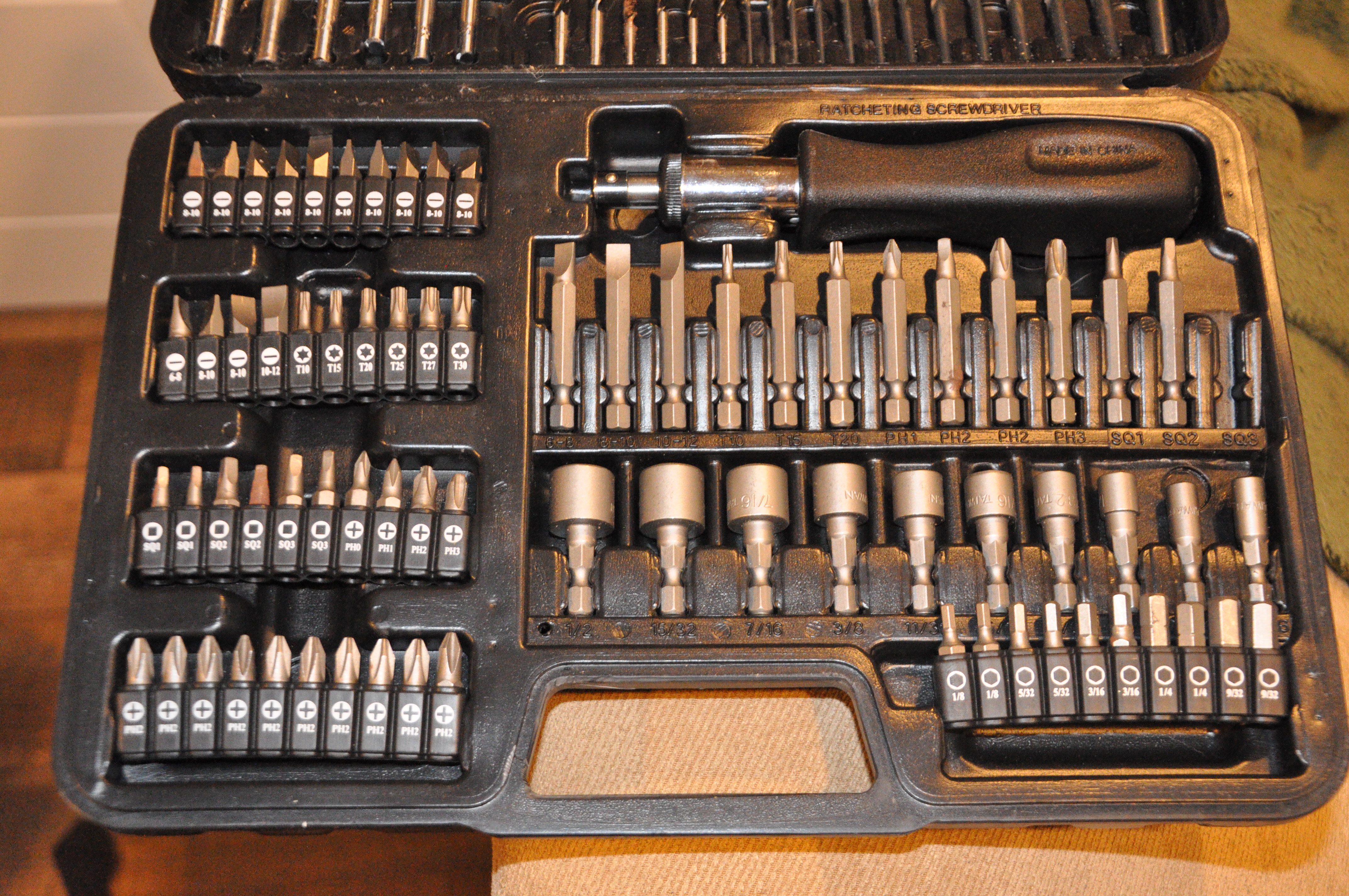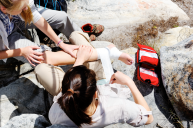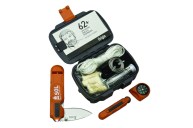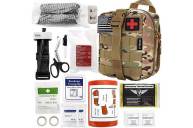These items need to be on your disaster-prep checklist.
If you haven't been paying attention to the news lately, you probably should. Coronavirus has taken the world by storm, and that majority of people find themselves unprepared for these situations.
If you've never considered yourself a "prepper," it might be time to jump on that bandwagon. That's why we put together a disaster prep checklist that should have you ready for anything.
In the best-case scenario, you'll never need these emergency supplies, but if the SHTF moment ever knocks on your door and 911 is unavailable, you'll be glad you prepared.
Food and water
Of these two items, the latter is much more important. Human beings can survive a long time without food. But depending on the situation, you might only have a week if you don't have a supply of clean water. Most experts recommend storing at least a gallon per person per day.
That gallon is meant to cover both drinking and sanitation purposes. You can buy large water storage containers at pretty much any camping or outdoor store.
Even though one can survive a long time without food, there's no reason to skimp on the supplies. Food can give you the needed energy to get through a survival or disaster situation. You'll want to store away nonperishable food items. Here are just a few ideas:
- Peanut butter
- Crackers
- Cereal
- Granola bars
- Dried fruit
- Macaroni and cheese mix
- Oatmeal
- Rice
- Evaporated or powdered milk
- Dried peas
- Jelly
- Beef jerky
Canned food like meats, fish, fruits and vegetables is a great idea, too. Most canned goods come with an easy-opening tab these days, but pack a can opener, too, just in case. There are other ways to open canned goods if you don't have one, but why make things harder on yourself? Don't forget some plastic or paper cups and plastic utensils to eat with.
Whatever you pack away for emergency food items, make sure you have a three-day supply at a minimum and a way to prepare said food. Sure you can eat some canned food items cold, but it'll do wonders for your morale if you can have a hot meal.
You'll find most federal agencies recommend some comfort foods like cookies or chocolate to help ease the tension of this type of situation.
Personal sanitation and medical concerns
Don't skimp on having hygiene items available in your disaster supplies. Especially something like a flood because the stagnant waters can carry all sorts of diseases that can make you sick.
- Toilet paper
- Paper towels
- Feminine items
- Toothpaste
- Toothbrushes
- Soap/shampoo
- Washcloths
- Towels
- Sunscreen
- Shaving cream
- Razors
- Combs
- Hand sanitizer
- Wet wipes
- Disinfectant
- Household chlorine bleach
If there are infants in your home, you'll also want things like diapers, formula, bottles and food for them, too. Don't forget about dealing with waste. FEMA recommends a folding shovel of some kind to build a latrine. You might also want to have garbage bags on hand to deal with extra trash items.
While we're on the topic of health, we should also talk medications. Make sure you have extras of these items, especially any life-saving types of medication such as those for your heart or blood pressure.
- Prescription medications
- Insulin
- Asthma inhaler
- Extra eyeglasses or contact lenses
Another good idea is a first aid kit. Or even better, get two of them.

Travis Smola
The kit I keep in my vehicle is one of the better ones on the market because it includes hundreds of bandages in a variety of sizes. But even better, it also contains:
- Gauge cloth
- Exam gloves
- Tweezers
- Insect sting relief
- Extra strength asprin and non-asprin
- Sterile gauze dressing pads
- First aid gel
- Antiseptic cleaning wipes
- Trauma pad
- Instant cold compress
- Antibiotic ointment
- Burn gel
- Emergency foil blanket
- Medical tape
Make sure you go through the first aid kit before you put it with your disaster preparedness supplies to be sure it has all of this and maybe even a little more.
Tools and other equipment

Travis Smola
There are a number of other items you should keep on hand in your disaster supplies kit. Many federal agencies recommend keeping a wrench or pliers on hand to help shut off any utilities such as gas lines before they become a problem.
These days, you can find many multi-tool sets with varying sizes and types of wrenches and screwdrivers in just about any Walmart or home improvement store. Many of them come in hard, compact cases that are easy to store. Because of this, there's really no excuse to not have a variety of tools on hand for any problems you might encounter. Also, don't forget the following in your emergency kit.
- Flashlights
- Radio (NOAA hand crank emergency radios are available in many stores)
- Extra batteries
- Fire extinguisher
- Duct tape (it has a million uses in an emergency!)
- Zip ties
- Wrenches
- Screwdrivers
- Hammer/nails
- Lighters/matches in a waterproof container
- Flares/signal mirror
You might also consider an ax or saw for preparing firewood or an emergency shelter in the event nothing else is available. You can also use these tools to clear a road if you need to get a vehicle past a downed tree.
Bedding/clothing/important items
You want to make sure you have sleeping bags and pillows for sleeping. If you're strapped for space, you can use emergency foil blankets, which are available in any big box store camping section. Just know that the former will offer more comfort than the latter.
Keep an extra change of clothes or two on hand in a waterproof container. In wet conditions, you'll be glad to have a dry set of clothing on hand. Remember, it is the little things that most help with morale in a survival situation.
Another important piece of advice is to have a waterproof container on hand with copies of important family documents in it. Birth certificates, insurance policy papers and other irreplaceable documents should be in this box, as should an extra credit card just for emergencies. If you have room, copies of treasured family photos are also a good idea. If most of your photos are digital, so buy a cheap USB drive and save your most important ones there. If the worst should happen and you lose all material possessions, you'll be glad you did this.
Have a plan
Last, but not least, have a plan. Make an emergency preparedness checklist and review it with your loved ones. You owe it to your family members to have an emergency plan. Have a meeting place where you will all go in the event of a sudden disaster like a tornado.
Remember, it's better to have a plan and supplies and never have to use them than to not have those things and be caught unprepared in a disaster situation.
NEXT: WHY YOU SHOULD TRY FALL AND WINTER CAMPING THIS YEAR
WATCH
https://rumble.com/embed/u7gve.v3tsmt/




